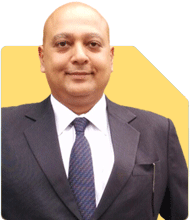Ramalingam Kalirajan |4277 Answers |Ask -Follow
Mutual Funds, Financial Planning Expert - Answered on Jul 03, 2024
He has an MBA in finance from the University of Madras and is a certified financial planner.
He is the director and chief financial planner at Holistic Investment, a Chennai-based firm that offers financial planning and wealth management advice.... more
.jpg)
Hi, I'm 28 years old (unmarried) earning around 1.5 lac per month(after taxes). My Investments are- PPF 25 lacs, FDs & RD 17 lacs, Mutual Funds 7 lacs (Monthly SIP 30k in equity funds, 10k in debt fund). Additionally I have some PLIs and LIC policies ongoing. Can you guide me on if i should add / remove something and how to plan for future?
Current Financial Snapshot
Monthly Income and Investments
Monthly Income (after taxes): Rs 1.5 lakh
PPF: Rs 25 lakh
FDs & RDs: Rs 17 lakh
Mutual Funds: Rs 7 lakh
Monthly SIP in Equity Funds: Rs 30k
Monthly SIP in Debt Funds: Rs 10k
Insurance Policies
PLI and LIC Policies: Ongoing
Portfolio Review
Strengths
Diversification: Your investments are spread across different asset classes, reducing risk.
Consistent Savings: Regular SIPs in equity and debt funds indicate disciplined investing.
Long-term Perspective: Investments in PPF and Mutual Funds show a focus on long-term growth.
Areas for Improvement
Liquidity Management: Ensure enough liquid funds for emergencies.
Portfolio Overlap: Check for overlapping investments in mutual funds.
Insurance Review: Assess if your current policies provide adequate coverage.
Detailed Analysis and Recommendations
Emergency Fund
An emergency fund is crucial. It should cover 6-12 months of expenses. Since you’re earning Rs 1.5 lakh per month, aim to set aside Rs 9-18 lakh in a high-yield savings account or a liquid mutual fund. This ensures you can handle unexpected expenses without disrupting your long-term investments.
Investment Strategy
Equity Funds
Equity funds are essential for long-term growth. They help combat inflation and offer higher returns. Your current SIP of Rs 30k in equity funds is a good start. Consider increasing this amount as your salary grows. Diversify your equity investments across large-cap, mid-cap, and small-cap funds to balance risk and return.
Debt Funds
Debt funds provide stability to your portfolio. Your Rs 10k monthly SIP in debt funds ensures a balanced approach. Debt funds are less volatile than equity funds, offering steady returns. They are suitable for short to medium-term goals.
Public Provident Fund (PPF)
PPF is a secure investment with tax benefits. Your Rs 25 lakh investment is substantial. Continue investing the maximum allowed amount annually to benefit from compound interest and tax savings.
Fixed Deposits (FDs) and Recurring Deposits (RDs)
FDs and RDs provide safety but offer lower returns compared to equity and some debt funds. Your Rs 17 lakh in FDs and RDs is a good reserve. Ensure the interest rates are competitive. Consider diverting part of this amount to higher-yielding instruments if they align with your risk tolerance.
Insurance Policies
Life Insurance
Your ongoing LIC policies are traditional plans. Review their performance and coverage. Traditional plans often offer lower returns. If they are investment-cum-insurance policies, consider surrendering them if they don’t provide sufficient returns and switching to pure term insurance for adequate coverage at a lower cost.
Health Insurance
Ensure you have a comprehensive health insurance policy. This protects your savings from medical emergencies.
Future Financial Planning
Setting Financial Goals
Short-Term Goals (1-5 years)
Emergency Fund: Fully fund your emergency reserve.
Skill Development: Invest in courses to enhance your career prospects.
Travel and Leisure: Allocate funds for vacations and hobbies.
Medium-Term Goals (5-10 years)
Buy a House: If you plan to purchase property, start a dedicated savings plan.
Car Purchase: Plan for a car purchase if needed.
Long-Term Goals (10+ years)
Retirement Planning: Aim to accumulate a corpus that provides financial independence.
Children’s Education: If you plan to have children, start early for their education.
Investment Vehicles
Mutual Funds
Diversified Equity Funds: Continue with diversified equity funds for long-term growth.
Thematic/Sector Funds: Allocate a small percentage to thematic or sector-specific funds for higher returns.
Debt Funds: Increase your allocation to high-quality debt funds for stability and income generation.
National Pension System (NPS)
NPS is a great tool for retirement planning. It offers tax benefits and a disciplined approach to retirement savings. Consider starting or increasing contributions to NPS.
Regular Portfolio Review
Annual Review: Conduct an annual review of your investments.
Rebalance Portfolio: Rebalance your portfolio to maintain the desired asset allocation.
Performance Tracking: Track the performance of your mutual funds and other investments. Replace underperforming funds.
Power of Compounding
How Compounding Works
Compounding is earning returns on your returns. The longer your money stays invested, the more it grows. Starting early and staying invested is crucial.
Example
Investing Rs 30,000 monthly at an annual return of 12% can grow to approximately Rs 3.5 crore in 20 years. This demonstrates the power of regular, disciplined investing.
Benefits of Early Investing
Starting early gives your investments more time to grow. Even small amounts can accumulate significantly over time due to compounding.
Actively Managed Funds vs. Index Funds
Actively Managed Funds
Professional Management: Experts make investment decisions based on research.
Potential for Outperformance: These funds can outperform the market by selecting high-potential stocks.
Disadvantages of Index Funds
Lack of Flexibility: Index funds track a market index, offering no flexibility to capitalize on opportunities.
Average Returns: Index funds provide market-average returns, which may not meet your financial goals.
Why Choose Actively Managed Funds?
Actively managed funds offer potential for higher returns through expert stock selection and market timing. They provide a dynamic approach to investing.
Regular vs. Direct Funds
Regular Funds
Advisor Support: Investing through a Certified Financial Planner (CFP) provides guidance and expertise.
Convenience: Regular funds offer ease of investment, portfolio reviews, and rebalancing.
Disadvantages of Direct Funds
No Advisory Support: Direct funds require you to make investment decisions without professional guidance.
Time-Consuming: Managing direct funds can be time-consuming, requiring regular monitoring and analysis.
Benefits of Investing Through CFP
A CFP helps you create a personalized investment plan, ensuring your portfolio aligns with your financial goals and risk tolerance. They provide valuable insights and adjustments as needed.
Final Insights
Stay Disciplined
Stick to your investment plan, regardless of market fluctuations. Regular investments and patience are crucial for long-term success.
Educate Yourself
Keep learning about different investment options and market trends. This helps you make informed decisions and optimize your portfolio.
Review Regularly
Regularly review and adjust your portfolio based on performance and changing financial goals. This ensures your investments remain aligned with your objectives.
Seek Professional Advice
Consult a Certified Financial Planner for personalized advice. They provide valuable guidance to optimize your investment strategy and achieve your goals.
By following these steps and staying committed to your financial plan, you’re well on your way to securing a prosperous future. Keep investing, stay informed, and watch your wealth grow!
Best Regards,
K. Ramalingam, MBA, CFP,
Chief Financial Planner,
www.holisticinvestment.in
You may like to see similar questions and answers below
Ramalingam Kalirajan |4277 Answers |Ask -Follow
Mutual Funds, Financial Planning Expert - Answered on May 13, 2024
Ramalingam Kalirajan |4277 Answers |Ask -Follow
Mutual Funds, Financial Planning Expert - Answered on May 06, 2024
Ramalingam Kalirajan |4277 Answers |Ask -Follow
Mutual Funds, Financial Planning Expert - Answered on May 13, 2024
Ramalingam Kalirajan |4277 Answers |Ask -Follow
Mutual Funds, Financial Planning Expert - Answered on Jun 07, 2024
Ramalingam Kalirajan |4277 Answers |Ask -Follow
Mutual Funds, Financial Planning Expert - Answered on Jul 05, 2024
Ramalingam Kalirajan |4277 Answers |Ask -Follow
Mutual Funds, Financial Planning Expert - Answered on Jul 05, 2024
Ramalingam Kalirajan |4277 Answers |Ask -Follow
Mutual Funds, Financial Planning Expert - Answered on Jul 05, 2024
Ramalingam Kalirajan |4277 Answers |Ask -Follow
Mutual Funds, Financial Planning Expert - Answered on Jul 05, 2024
Ramalingam Kalirajan |4277 Answers |Ask -Follow
Mutual Funds, Financial Planning Expert - Answered on Jul 05, 2024
Ramalingam Kalirajan |4277 Answers |Ask -Follow
Mutual Funds, Financial Planning Expert - Answered on Jul 05, 2024
Ramalingam Kalirajan |4277 Answers |Ask -Follow
Mutual Funds, Financial Planning Expert - Answered on Jul 05, 2024
Nayagam P P |1376 Answers |Ask -Follow
Career Counsellor - Answered on Jul 05, 2024
Sushil Sukhwani |436 Answers |Ask -Follow
Study Abroad Expert - Answered on Jul 05, 2024
Sushil Sukhwani |436 Answers |Ask -Follow
Study Abroad Expert - Answered on Jul 05, 2024
















.jpg)






